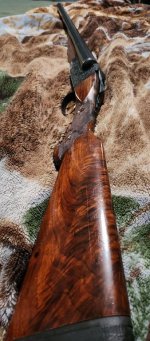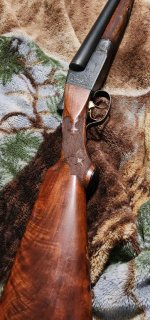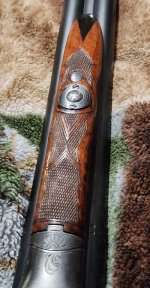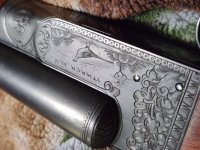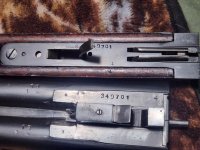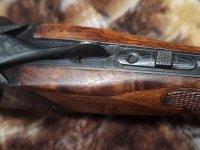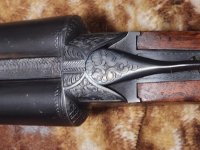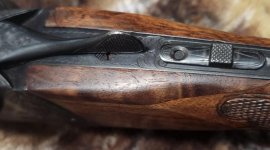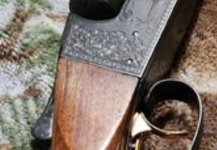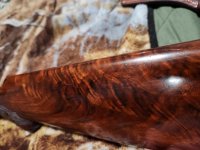Emil Flues was the inventor. Quite a gun designer and maker. Worked for quite a few of the mfg'rs in NY in that era incl Newton (Buffalo) and Baker (Batavia).
A number of his own hand made SBT guns are around as well.
Treat the Flues model kindly, it is not as strong as the later and last Ithaca SxS , the NID.
'Short Chambers' are a good possibility with that yr/mfg.
2 5/8" was standard for 12ga, but many of them measure out to 2 1/2".
The Flues frames are known to crack especially on the lightweight small bore guns. But not unkn on the 12s as well.
The crack usually starts right at the jucture of the standing breech and the action flat,,that 90* angle.
Then procedes downward thru the side wall of the frame,,which is very thin on the Flues.
Easy on the loads and it'll be fine. Push it with OTC 11.5k psi stuff and you are asking for problems.
The stock attachment to the frame on the Flues is another problem. That top-tang screw,,the one underneath the Top Lever,,is NOT a threaded bolt that extends down thru and threads into the trigger plate as with most every other SxS.
Instead on the Flues,,that Top Tang screw is a very short stubby,,wood screw.
It has very little holding power and offers no pulling/draw on the frame to pull the frame and stock together as with other SxS designs.
The rear tang screw coming up from the bottom is the only other frame to stock attachment bolt,,and it is a very small dia one.
For this reason, Flues models often have the top left and right 'ears' of the stock cracked right where the stock meets the frame.
That's from the action being able to rotate back and then upwards slightly on recoil. A result of the less than perfect Top Tang screw not being a solid clamping and draw together design.
The ejectors are fairly simple design and if they need work, can be repaired w/o too much hand wringing.
The mainsprings are coil as are the ejector springs.
In fact I think all the springs in the Flues are coil springs.
Been a while since I had one a part.
Bbl flats should show the chokes.
0,S,1,2,3,4
Cyl, Skeet, Imp Cyl, Mod, Imp Mod, Full
2&4 are the most common
Gold plated triggers were standard on the 4E IIRC
The orig finish of the frame was color case hardening. Top lever varied betw charcoal blue and CCH.
Trigger guards were charcoal blued.
The engraving was likely done by Bill McGraw . He was Ithaca's in house engraver at the time. The cut of the standard pattern looks like his. They did farm out some work and had other engravers working there from time to time.
McGraw worked as an engraver for Ithaca for something like 65 yrs starting around WW1.
That's all I remember at the moment..
Nice shotgun,,needs a SC or Skeet range!

